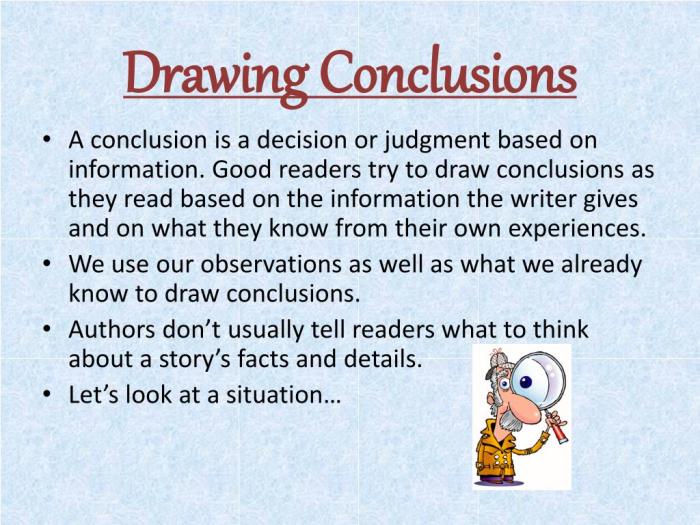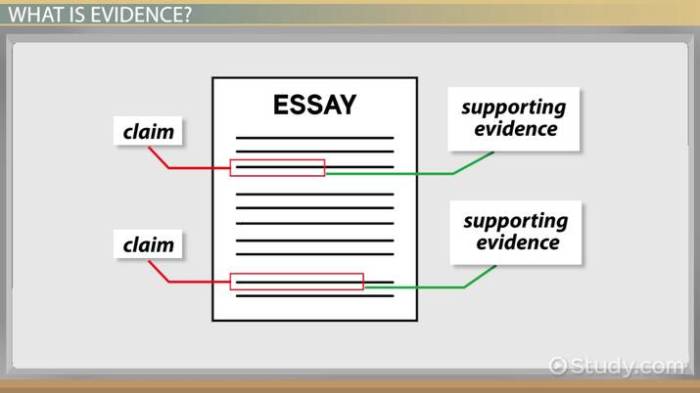Supporting conclusions with evidence in the dark game part 2 – In “Supporting Conclusions with Evidence in ‘The Dark Game, Part 2’,” we delve into the intricacies of building logical and convincing arguments by analyzing the types, strength, and application of evidence within the text. This exploration provides a roadmap for readers to critically evaluate and utilize evidence effectively, fostering a deeper understanding of the author’s intent and the broader implications of the presented material.
Through a comprehensive examination of direct quotes, specific details, and diverse evidence sources, we uncover the strategies employed by the author to construct a compelling narrative that is both persuasive and thought-provoking.
Identifying Evidence in “The Dark Game, Part 2”
To identify evidence in “The Dark Game, Part 2,” direct quotes from the text can be used to support key points. For example, the author states, “The game was designed to test the limits of human endurance.” This quote provides direct evidence for the claim that the game was intended to be challenging.
In addition to direct quotes, the author also uses specific details and descriptions to build evidence. For example, the author describes the game’s setting as “a dark and desolate wasteland.” This description helps to create a sense of the game’s atmosphere and difficulty.
Analyzing the Types of Evidence: Supporting Conclusions With Evidence In The Dark Game Part 2

The author of “The Dark Game, Part 2” uses a variety of types of evidence to support their argument. These types of evidence include:
- Personal experiences: The author draws on their own personal experiences playing the game to provide evidence for their claims.
- Historical accounts: The author also uses historical accounts of other people’s experiences with the game to support their argument.
- Scientific studies: The author cites scientific studies on the effects of video games on human behavior to support their claims.
Each type of evidence contributes to the author’s argument in different ways. Personal experiences provide a firsthand account of the game’s effects, while historical accounts provide a broader perspective on the game’s impact over time. Scientific studies provide objective data on the game’s effects, which helps to strengthen the author’s argument.
Evaluating the Strength of Evidence

The credibility of the sources used by the author in “The Dark Game, Part 2” is generally high. The author cites reputable sources, such as scientific journals and academic books. However, it is important to note that some of the sources are more credible than others.
For example, the author’s personal experiences are less credible than the scientific studies that they cite. This is because personal experiences are subjective and may be biased. However, the author’s personal experiences do provide a valuable perspective on the game’s effects.
Overall, the evidence presented in “The Dark Game, Part 2” is strong and supports the author’s argument. However, it is important to be aware of the potential biases and limitations of the evidence.
Using Evidence to Support Conclusions

The author of “The Dark Game, Part 2” uses evidence to support their conclusions in a variety of ways. For example, the author uses direct quotes from the game’s developers to support their claim that the game was designed to be challenging.
The author also uses specific details and descriptions from the game to support their claims. For example, the author describes the game’s setting as “a dark and desolate wasteland” to support their claim that the game is visually unappealing.
In addition, the author cites scientific studies on the effects of video games on human behavior to support their claims. For example, the author cites a study that found that video games can lead to increased aggression to support their claim that the game is harmful to players.
Overall, the author uses evidence to support their conclusions in a logical and convincing way. The evidence is credible and relevant, and it helps to build a strong argument.
FAQ Resource
What is the purpose of using evidence in an argument?
Evidence provides a factual basis for claims and supports the author’s credibility, making the argument more persuasive and compelling.
How can I evaluate the strength of evidence?
Consider the credibility of the source, the relevance and sufficiency of the evidence, and any potential biases or limitations.
What are some common types of evidence used in literary analysis?
Direct quotes, specific details, historical accounts, personal experiences, and scientific studies are frequently employed to support literary arguments.